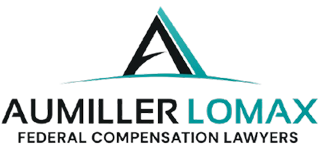The Role of Vocational Rehabilitation in Federal Workers’ Compensation Cases


The Role of Job Rehabilitation in Federal Workers’ Comp
Dealing with the aftermath of a workplace injury is daunting. Not only do you have to worry about your physical recovery, but you may have concerns about keeping your job as well. While you cannot be fired for reporting a workplace accident, many employees feel less able to do their jobs effectively after being injured. Here’s where vocational rehabilitation comes in— a key part of the federal workers’ compensation system that aims to help employees transition back into the workforce. The team at Aumiller Lomax can help you understand when vocational rehabilitation may apply and how it works in federal workers’ compensation cases.
What Is Vocational Rehabilitation?
Vocational rehabilitation under the Federal Employees’ Compensation Act (FECA) supports federal employees who have been injured on the job and are medically unable to return to their date-of-injury position. Although it may include services like counseling, retraining, and job placement, its primary purpose is to evaluate your ability to reenter the workforce—and to determine whether your wage-loss compensation should be continued, reduced, or ended.
Depending on your situation, OWCP (the Office of Workers’ Compensation Programs) may assign a vocational rehabilitation counselor to help coordinate services, such as:
- Personalized Counseling— Counselors can help you assess your skills and goals as you adjust to your post-injury limitations.
- Job Retraining—Vocational rehabilitation may include courses or training programs to develop new skills aligned with your capabilities and the current job market.
- Job-Seeking Skills— Vocational counselors may provide job leads and offer support for interviews, applications, and resumes.
- Workplace Modifications— If your previous agency is open to reemployment, a counselor may assist in identifying job modifications to accommodate your restrictions.
Note: While other systems may include benefits like assistive technology or ergonomic equipment, such services are rarely approved in federal workers’ comp unless your previous agency offers modified work.
How Federal Employees Can Benefit
Vocational rehabilitation is often described as a “return-to-work” program, but it also plays a significant role in determining your eligibility for ongoing compensation. Successful rehabilitation may mean returning to work—either in your former role, a modified position, or a new career. However, if OWCP concludes that you could return to work in a specific capacity, even if you haven’t yet done so, they may reduce or stop your wage-loss benefits based on your wage-earning capacity.
With that in mind, here are a few potential benefits of the process:
A Structured Path Toward Return to Work
The goal is to identify a realistic job path based on your current abilities. This may involve job placement with your original agency or, if that’s not possible, a new employer.
Reasonable Training and Education
If the labor market survey shows that retraining is necessary to support reemployment, you may be offered access to short-term programs. However, training is not guaranteed and is only approved if cost-effective and justified. This can include on-the-job training, educational courses, or learning new skills that align with emerging job markets.
Career Counseling and Job Placement
Counselors can help you clarify goals and build job-seeking confidence—but they are not your advocate. Their role is to guide the process and report to OWCP about your cooperation and progress.
Receiving Vocational Rehab in Federal Workers’ Comp
You don’t apply for vocational rehabilitation—it’s assigned by OWCP when they determine that you’re medically capable of working in some capacity but cannot return to your original position.
Here’s how the process typically begins:
- OWCP obtains medical evidence showing you are partially disabled but have work capacity.
- You are assigned a vocational counselor, who evaluates your transferable skills and the local labor market.
- A reemployment plan is developed, which may include job search assistance or limited training.
- Your compensation may be adjusted if OWCP identifies a job you could perform (even if you don’t find one).
Important: Participation is mandatory. Failing to cooperate may lead to a suspension or reduction of your compensation—even if you don’t find a job.
Our Tips for Injured Federal Employees
At Aumiller Lomax, we’re proud to help U.S. citizens understand rehabilitation’s significance in federal workers’ comp matters. We’ve worked with clients across the Northeast and beyond, and here’s what we recommend:
- Be Proactive— Respond to your counselor, attend all meetings, and stay engaged in the process.
- Communicate Often—Are you concerned about your recovery plan? Don’t hesitate to communicate with your counselor, healthcare providers, employer, and legal team.
- Know Your Rights – While you must cooperate, you don’t have to agree with every recommendation. Talk to your attorney before signing plans that seem inconsistent with your abilities.
- Stay Grounded – Remember that vocational rehab may reduce your benefits even without a job offer. Being informed is your best defense.
Choose an Experienced Attorney
The path to recovery for injured federal employees is multifaceted. Vocational rehabilitation is often described as a benefit, but it can also result in a permanent reduction in your wage compensation. If you’re facing this process, don’t go it alone. At Aumiller Lomax, we help clients navigate vocational rehabilitation with clarity and confidence. Contact us today for a no-fee consultation.
